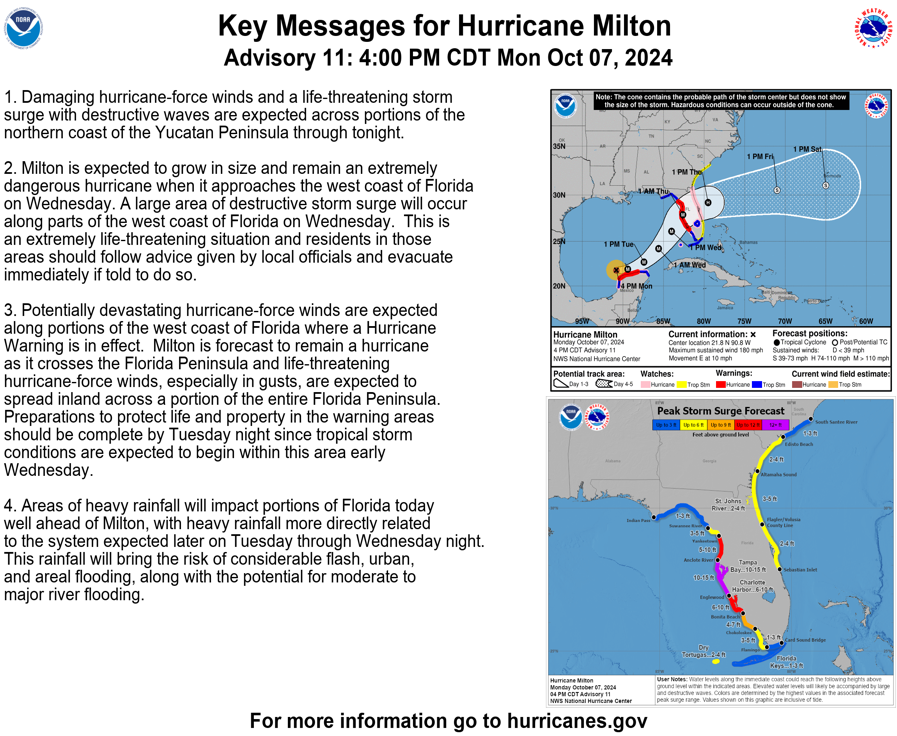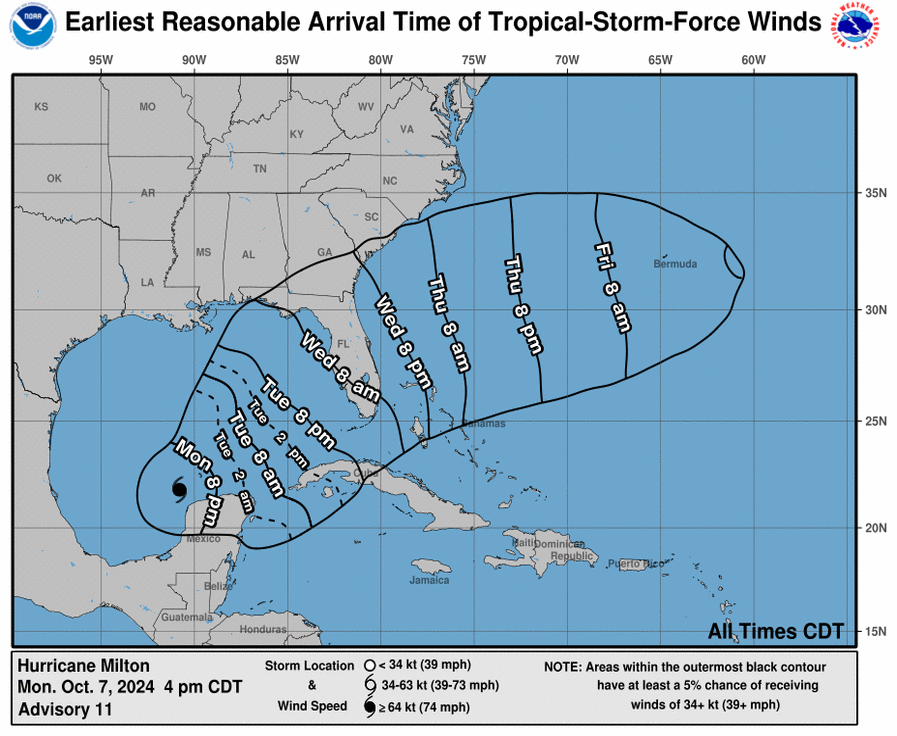Hurricane Milton
HEAD START CLOSURES
Head Start Duval |
Head Start Pinellas |
Head Start Hillsborough |
Head Start Palm Beach County |
Head Start Okaloosa |
PEPPI | NONE
LSF CLOSURE NOTICES
Gilchrist Offices –
Dixie –
Levy County –
Pinellas County –
Hillsborough County –
Lake /Sumpter CMO –
Family Resource Centers –
Manatee County –
Sarasota County –
Lee County –
CRS
Tampa Central Services
LSF STAFF RESOURCES
Bob Bialas | 09.25.2024
Good Morning LSF,
Bob
Have a Family Emergency Plan
The Great Hurricane Blowout offers a number of preparation resources including tools for building a family emergency plan and hurricane emergency kit at www.greathurricaneblowout.org.
What will your family do if a hurricane is coming? You should have a family emergency plan.
- Collect copies of important papers such as the deed to your home, insurance paperwork, financial information, etc.
- Review your property insurance coverage and keep updated photos and/or a video inventory of your personal belongings.
- Store important phone numbers such as the number of your insurance company, doctor, veterinarian, and family contacts in a safe place.
- Identify your evacuation routes. Have an alternate route planned in case the first option is not navigable.
- Identify the safest place in your home to ride out a storm and make sure everyone knows where to go.
- In case your family is not together when a hurricane hits, make sure you have a pre-identified meeting place in addition to your home, and make sure everyone knows the address and phone number of your meeting spot.
- If you have a medical issue or may need help evacuating, contact your local emergency management agency now to find out how to get the help you may need.
Sheltering In Place
When sheltering in place take some steps to ensure you are prepared.
- Move all electronics away from the windows/outside walls of the house.
- Take a picture of the back of electronics (for reference when setting back up) and unplug the electronics to avoid damage during any power surges.
- Cover electronics with plastic bags to avoid possible water damage
- Know where your electrical panels are in your house is to check breakers to re-activate power
- Make sure you have picked up available sandbags if needed CENTRAL FLORIDA | WEST FLORIDA
- Make sure vehicles are filled with fuel
- Stock toilet paper and drinking water
- If you have pets fill your bathtub with water so they have something to drink if water service is disrupted
- make sure any mini power supplies, phones, and MIFIs are charged
Build a Hurricane Emergency Kit
The following supplies should be included in all hurricane emergency kits. Special circumstances such as medical needs or pets should be taken into consideration when planning your kit.
- Three-day supply of non-perishable food and water for each person in the household (one gallon of water per person, per day)
- Battery-powered or hand-crank emergency radio
- Flashlight
- Dust masks (at least 4)
- Batteries (8 AA and 4 D)
- Trash bags (4 per kit)
- First aid kit that includes: two pairs of latex or other sterile gloves; sterile dressing to stop bleeding; cleansing agent/soap and antibiotic wipes to disinfect; antibiotic ointment to prevent infection; burn ointment to prevent infection; adhesive bandages in a variety of sizes; eye wash solution to flush the eyes or as a general decontaminant.
- Can opener
- Hand sanitizer
- Five-gallon bucket or other container for kit supplies
Other Links
- http://www.floridadisaster.org/family/
- http://www.floridadisaster.org/shelters/
- https://asd.fema.gov/inter/locator/home.htm
- http://www.redcross.org/prepare/disaster/hurricane
- http://emergency.cdc.gov/disasters/hurricanes/supplies.asp
- http://www.wunderground.com/hurricane/preparedness.asp
- http://www.spc.noaa.gov/products/watch/
- http://www.nhc.noaa.gov/
- http://map.floridadisaster.org/gator/map.html

